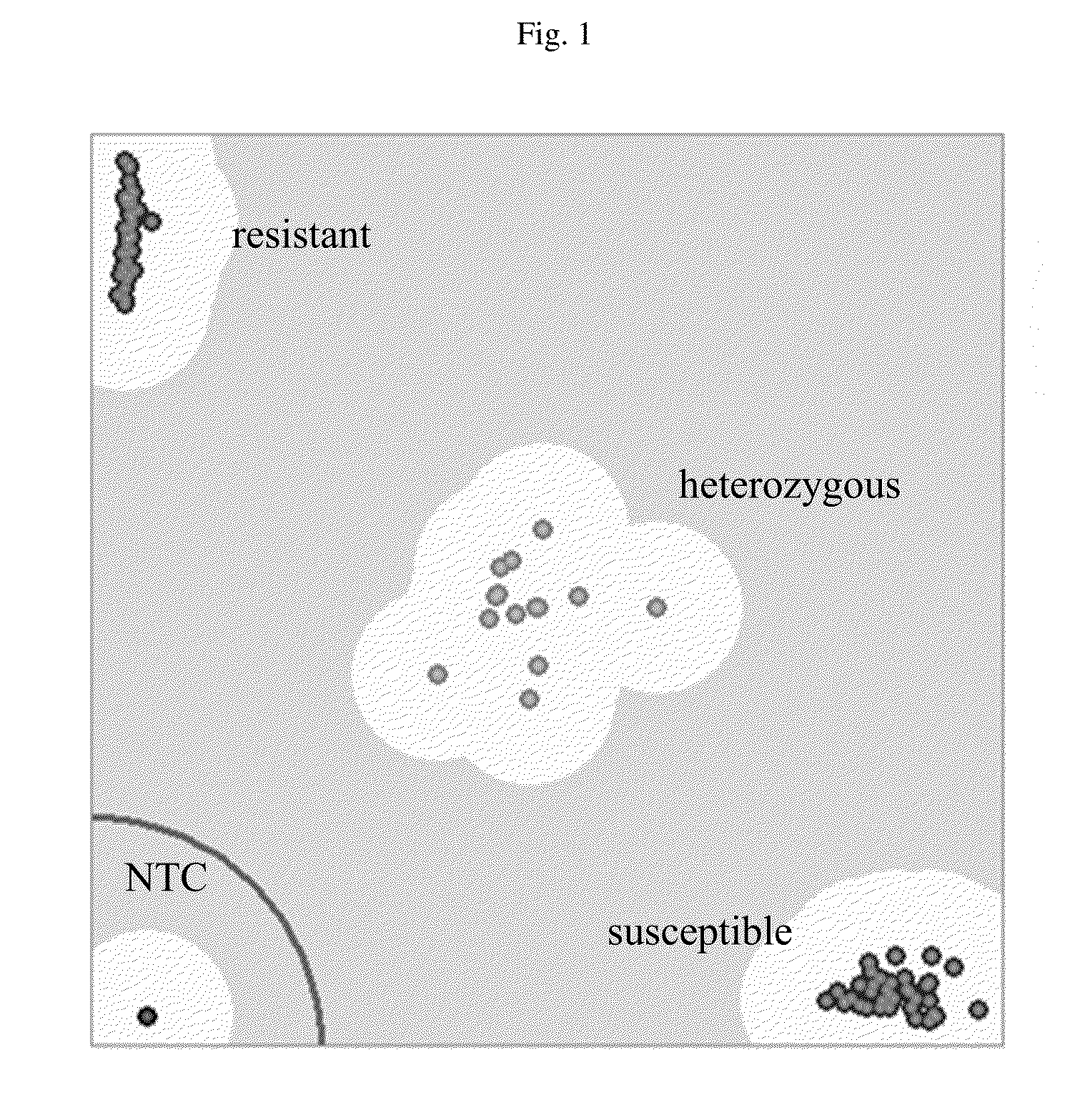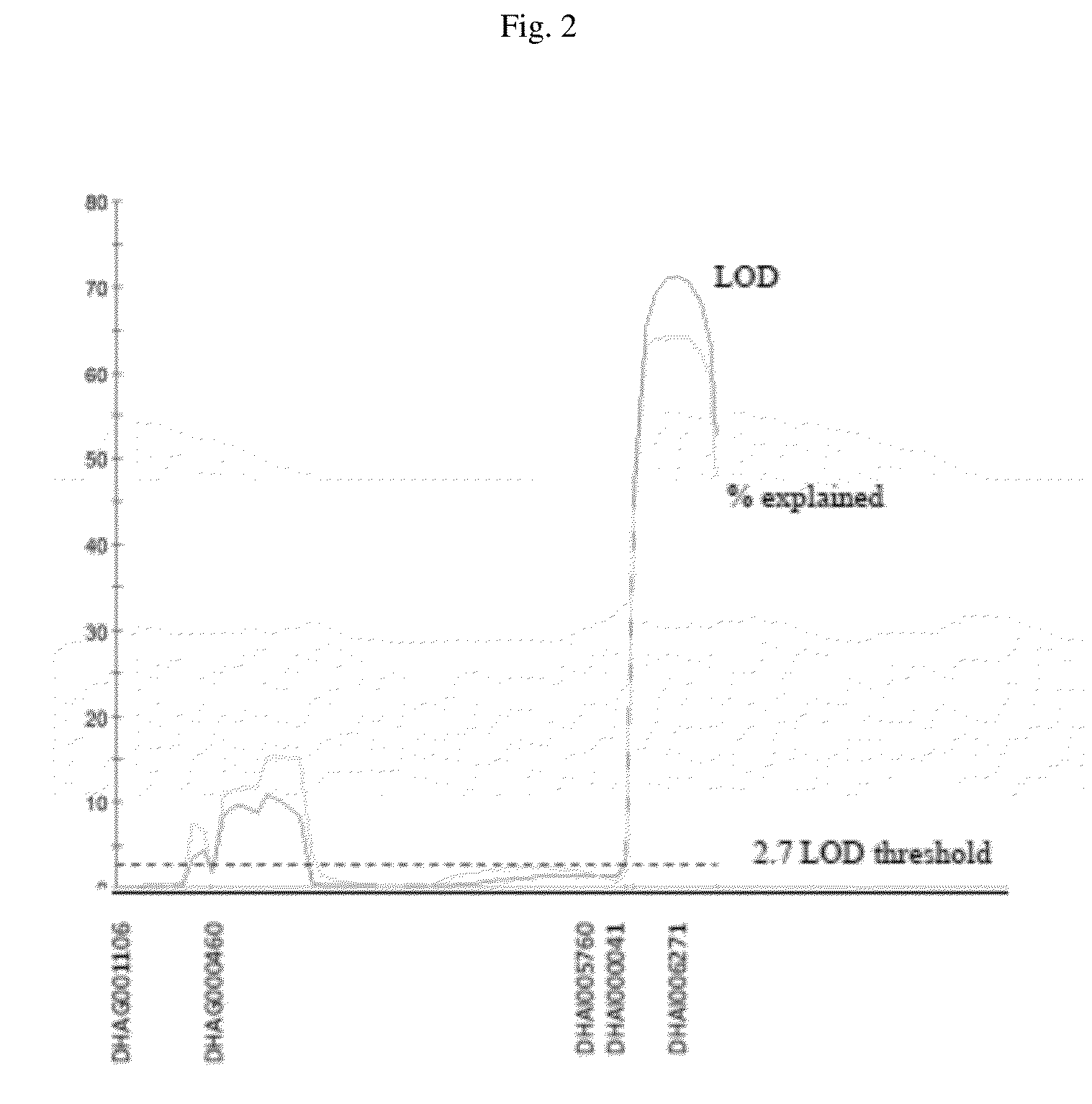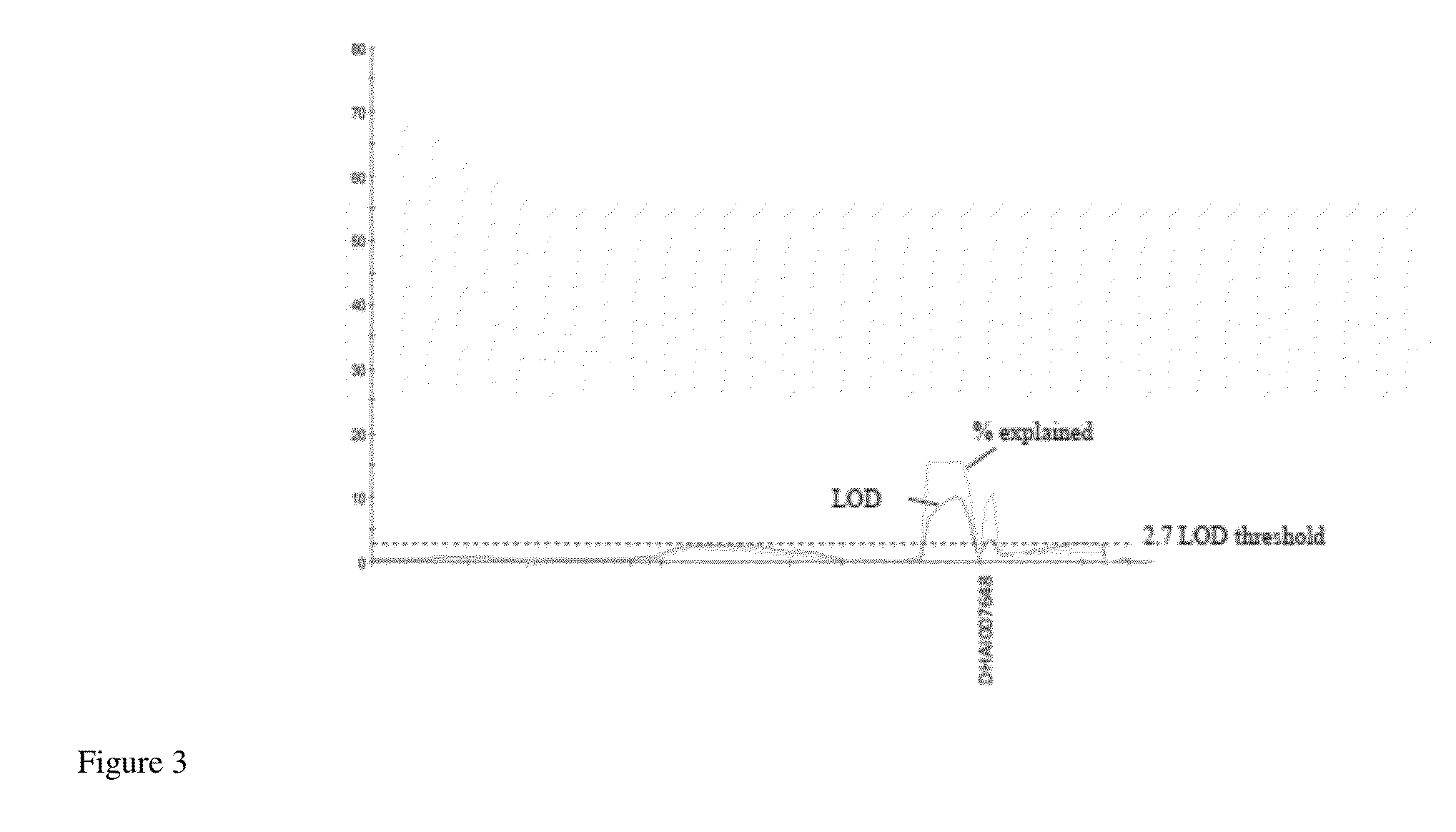Methods and compositions for identifying verticillium wilt resistant sunflower plants
a technology of verticillium wilt and sunflower, which is applied in the field of methods and compositions for identifying and breeding of sunflower plants, can solve the problems of reduced water and nutrient flow, conidia have difficulty in developing above ground on healthy plants, and are generally too expensiv
- Summary
- Abstract
- Description
- Claims
- Application Information
AI Technical Summary
Benefits of technology
Problems solved by technology
Method used
Image
Examples
example 1
Mapping Populations
[0145]Two recombinant inbred lines (RILs) mapping populations based on F3 and F4 generations were developed for a cross between CN8861R and ONN120R. The mapping populations were segregating for the Verticillium wilt resistance trait. The populations were grown in the Verticillium wilt inoculation field at the Sunflower Breeding Station, Venado Tuerto, Argentina, using a randomized field block design layout. The F1's were developed by crossing the CN8861R (resistant line)×ONN120R (susceptible line) and were advanced to F3 and F4 generations by single seed descent.
example 2
Phenotyping the Mapping Population
[0146]The F3and F4 families were planted in rows of 15 plants, each derived from individual F2 and F3 plants. In total, 272 and 260 plants rows were grown for the F3 and F4 populations, respectively. Disease phenotyping was based on the natural field inoculation, as the Verticillium wilt inoculation field provided a good source of soil borne fungal pathogen Verticillium dahliae, the causative agent of this disease, and presented significant disease pressure. Each population was scored for the disease symptoms present on leaves and stems. Leaf symptoms were scored on a scale of 0-4 (0 being resistant and 4 highly susceptible) and were less informative due to similar symptoms for other sunflower diseases. Stem symptoms, which are more definitive for the disease, were scored during the later growth stage after the plants were completely matured and stalks were dried and brown. Individual plants in each row were scored either resistant or susceptible ba...
example 3
DNA Extraction
[0148]Tissue samples were collected from F2 plants and also a single plant from each F4 row for DNA extraction and genotyping with markers. Genomic DNA was extracted from the leaf tissue of the mapping populations and their parental lines on the BioCel 1800 robotic platform (Agilent Technologies, Santa Clara, Calif.) using the Qiagen MagAttract protocol (Qiagen, Valencia, Calif.). The resulting DNA was diluted 1:20 for genotyping.
PUM
| Property | Measurement | Unit |
|---|---|---|
| length | aaaaa | aaaaa |
| length | aaaaa | aaaaa |
| length | aaaaa | aaaaa |
Abstract
Description
Claims
Application Information
 Login to View More
Login to View More - R&D
- Intellectual Property
- Life Sciences
- Materials
- Tech Scout
- Unparalleled Data Quality
- Higher Quality Content
- 60% Fewer Hallucinations
Browse by: Latest US Patents, China's latest patents, Technical Efficacy Thesaurus, Application Domain, Technology Topic, Popular Technical Reports.
© 2025 PatSnap. All rights reserved.Legal|Privacy policy|Modern Slavery Act Transparency Statement|Sitemap|About US| Contact US: help@patsnap.com



